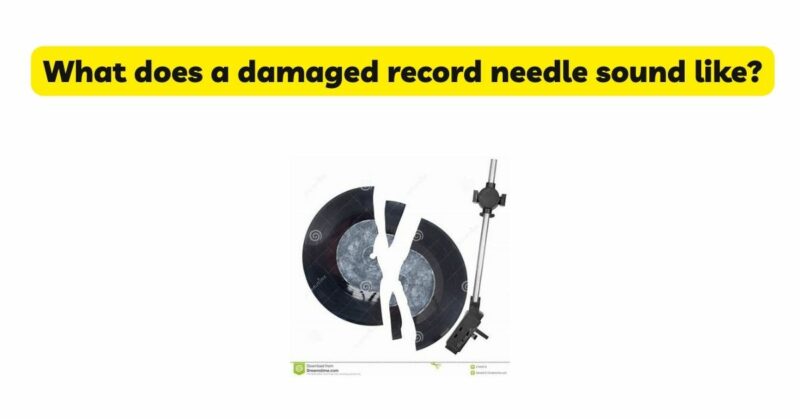A record needle, also known as a stylus, plays a crucial role in extracting sound from vinyl records. However, like any mechanical component, it is prone to wear and damage over time. In this article, we will explore the various signs and sounds that indicate a damaged record needle. By understanding these auditory cues, vinyl enthusiasts can detect potential issues early and take appropriate action to preserve their record collection and ensure optimal sound quality.
I. The Anatomy of a Record Needle
- Stylus Components: The stylus consists of a needle tip, cantilever, and suspension system. These components work together to track the record grooves and convert the physical information into electrical signals.
- Needle Types: Different needle types, such as spherical, elliptical, and microline, have distinct characteristics that affect sound reproduction and longevity.
II. Auditory Signs of a Damaged Needle
- Distorted Sound: A damaged needle may produce distorted or muffled sound. This can manifest as an overall lack of clarity, imprecise instrument separation, or vocal sibilance.
- Skips and Jumps: When the needle fails to track the record grooves properly, it may result in skips or jumps, causing the music to momentarily stop or skip to a different section of the track.
- Excessive Surface Noise: A worn or damaged needle can increase surface noise, including crackling, popping, or hissing sounds. This noise can overshadow the music and affect the overall listening experience.
- Tracking Issues: A damaged needle may struggle to maintain consistent tracking, leading to audible fluctuations in volume or unbalanced stereo imaging.
- Sibilance and Distortion in Vocals: If the needle is not properly aligned or damaged, it can introduce sibilance, which refers to the excessive hissing or sharp “S” sounds in vocal recordings. Additionally, distortion in vocals can occur due to an imperfect needle tip or damaged cantilever.
III. Actionable Steps for Addressing Needle Issues
- Visual Inspection: Examine the needle under a magnifying glass or microscope to look for visible signs of damage or wear, such as a bent or broken tip, misalignment, or flattened edges.
- Cleaning the Needle: In some cases, the needle may accumulate dirt, dust, or debris, affecting its performance. Use a specialized stylus brush or cleaning solution to gently remove any build-up.
- Alignment and Calibration: Proper alignment and calibration of the cartridge and stylus are essential for optimal sound reproduction. Consult the turntable and cartridge manuals or seek professional assistance to ensure accurate alignment.
- Needle Replacement: If the needle shows significant signs of damage or wear, it may be necessary to replace it. Consult the manufacturer’s guidelines or seek advice from experts to choose the appropriate replacement needle for your specific cartridge.
Conclusion
Listening to vinyl records is a unique and cherished experience, and the condition of the record needle significantly impacts sound quality. By being attuned to the sounds associated with a damaged needle, enthusiasts can identify potential issues and take the necessary steps to rectify them. Regular maintenance, cleaning, and proper alignment are crucial for preserving the lifespan and performance of the needle. Remember to handle the needle with care, follow the manufacturer’s guidelines, and seek professional assistance when needed. By maintaining a healthy needle, you can enjoy the true beauty of vinyl records and ensure a satisfying listening experience for years to come.


